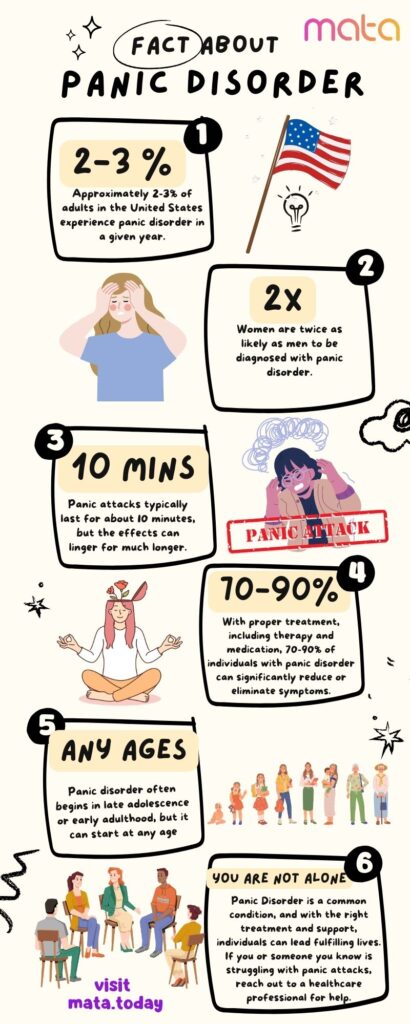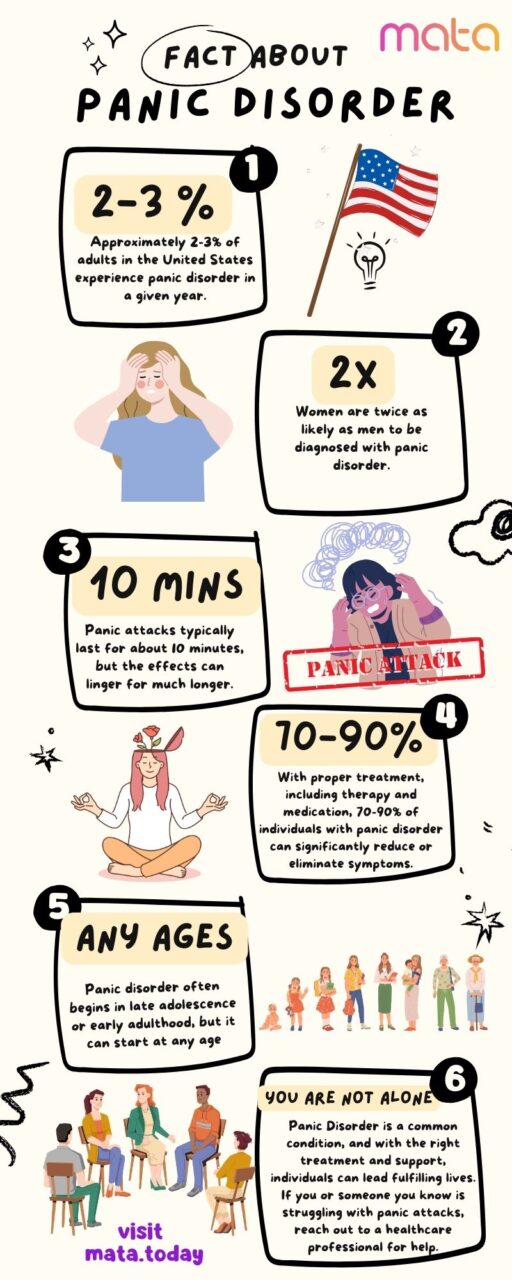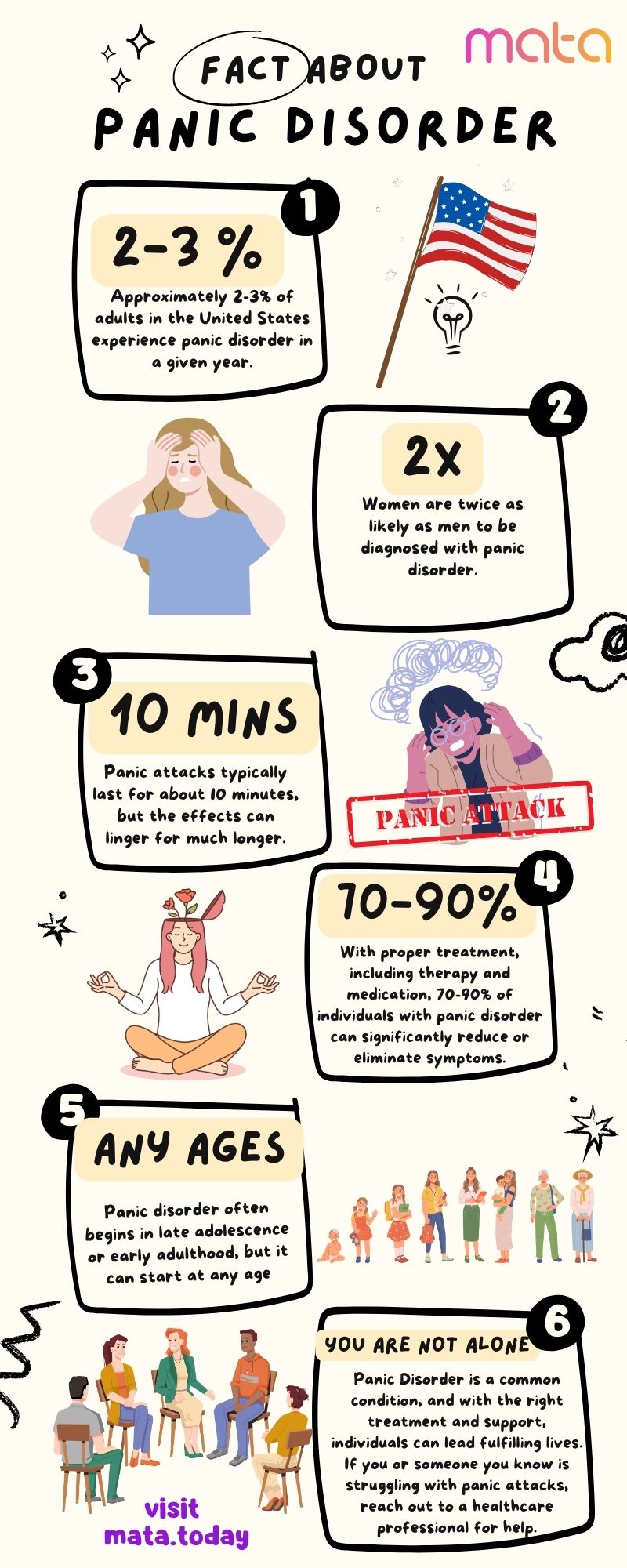What is Panic Disorder?
Panic Disorder is a type of anxiety disorder characterized by sudden and repeated attacks of intense fear and discomfort. These episodes, known as panic attacks, often occur without warning and without any obvious trigger.

Facts About Panic Disorder
- Prevalence: Approximately 2-3% of adults in the United States experience panic disorder in a given year.
- Onset Age: Panic disorder often begins in late adolescence or early adulthood, but it can start at any age.
- Gender Difference: Women are twice as likely as men to be diagnosed with panic disorder.
- Impact on Life: Panic disorder can severely affect daily life, leading to avoidance of situations, social isolation, and difficulties at work or school.
- Comorbidity: Panic disorder often occurs alongside other mental health conditions, such as depression, other anxiety disorders, or substance abuse.
- Physical Symptoms: The physical symptoms of a panic attack can be so intense that many people mistake them for a heart attack.
- Duration: Panic attacks typically last for about 10 minutes, but the effects can linger for much longer.
- Treatment Success: With proper treatment, including therapy and medication, 70-90% of individuals with panic disorder can significantly reduce or eliminate symptoms.
- First Attack: Many people experience their first panic attack during a period of stress or following a stressful event.
- Hereditary Factor: Panic disorder can run in families, suggesting a genetic component to the condition.
Symptoms of a Panic Attack
- Heart Palpitations: Rapid or pounding heartbeat.
- Shortness of Breath: Feeling like you can’t breathe.
- Chest Pain: Discomfort or pain in the chest.
- Dizziness: Feeling lightheaded or faint.
- Sweating: Excessive sweating, even in cool conditions.
- Nausea: Upset stomach or feeling like you need to vomit.
- Trembling: Shaking or trembling hands and body.
- Fear of Losing Control: Feeling like you’re losing control or going crazy.
- Fear of Dying: Intense fear of death or impending doom.
Causes of Panic Disorder
- Genetics: Family history of panic disorder or other anxiety disorders.
- Stress: Major life stress, such as the death of a loved one or a significant life change.
- Biological Factors: Abnormalities in brain function or neurotransmitter imbalances.
- Personality: More common in people with certain personality types, such as those who are more sensitive to stress or negative emotions.
Managing Panic Disorder
- Therapy: Cognitive Behavioral Therapy (CBT) can help manage symptoms.
- Medication: Antidepressants and anti-anxiety medications may be prescribed.
- Lifestyle Changes: Regular exercise, a healthy diet, and adequate sleep can help reduce symptoms.
- Relaxation Techniques: Deep breathing, meditation, and yoga can help calm the mind.
- Support Groups: Connecting with others who have panic disorder can provide support and understanding.
You are Not Alone
Panic Disorder is a common condition, and with the right treatment and support, individuals can lead fulfilling lives. If you or someone you know is struggling with panic attacks, reach out to a healthcare professional for help.







